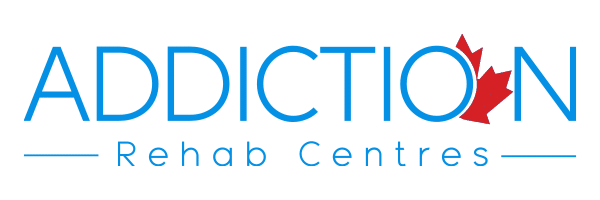Addiction Among Youth In Canadian Schools
It is important to know that there will be a huge number of students who will be offered to try and use drugs when they graduate from high school. The younger an individual is when drug abuse begins, the greater the likelihood of a lifetime addiction to that drug developing. According to the reports by Canada’s Cigarette, Alcohol and Drug Use Survey, Canadians aged 15-19 are continuing to report drug use. In 2017:
- 57% reported alcohol use· 8% reported smoking cigarettes
- 19% reported using cannabis
- 20% reported use of at least one of cannabis, cocaine or crack, ecstasy, speed or methamphetamine, hallucinogens, and heroin
- 18% reported using prescription stimulants like Ritalin, Concerta, Adderall, or Dexedrine
Canadian teens with the age below 15 years are considered to be a strong predictor of substance abuse later on. Moreover, attitude toward drug use is another predictor, as students who display a positive attitude to substance abuse are more likely to engage in this behaviour. In Alberta, 24.5% of students from grades 7 to 12 reported illicit drug use in the past year.
Some of the most commonly used drugs include hallucinogens like magic mushrooms, Ecstasy, cocaine, solvents, stimulants, glue, and crystal meth. The Yukon, Northwest Territories, and Nunavut each have large numbers of Aboriginal communities that have teenage drug use rates well above the national average.
In the United States, 9 out of 10 people addicted to a substance took it for the first time before their 18th birthday. Use before age 15 multiplies the risk of addiction by seven, compared with use that begins after age 21. Alcohol, marijuana, cigarettes and prescription medications are among the drugs most commonly used by young people in American high schools. By graduation:
- 66% report having tried alcohol, 40% report having been drunk in the past 30 days
- 40% report having smoked a cigarette
- 50% report having tried cannabis, 7.5% report having done so for the first time before age 13
- 20% report illegal use of prescription drugs
- 44% reported knowing a student who sold marijuana, Ecstasy, cocaine or crack, and/or prescription medications on school property
Drug abuse in Canada and the US has become a serious issue among young people and many of them start to consume before high school. This greatly increases the risk of developing a substance use disorder. Focusing intervention efforts on children in middle school, and during their teenage years, is crucial, and well supported by addiction research.
Drug Addiction Among Youth
When a person starts to consume drugs for the first time, they will develop a habit of physical dependence. The habit slowly changes to craving and then it makes them serious addicts. As this use continues, a tolerance to the drug develops. This perpetuates the cycle of craving and consumption as the dependency worsens. Eventually, this will result in a psychological dependence in addition to the physical one, as the user begins to feel as if the drug is “needed” emotionally as well as physically.
Addiction to one substance can increase the likelihood of developing an addiction to another. Tolerance to softer drugs like nicotine and alcohol can lead to experimentation with harder drugs like marijuana, opioids, Ecstasy, cocaine, and heroin. One use of a drug creates a physical dependence, and the cycle continues, leading to a second, or even a third addiction.
You need to know that adolescents are extremely vulnerable to peer pressure. If a friend is using drugs, that offers the opportunity for exposure to those drugs, and displays a positive attitude on behalf of the friend, both factors in the likelihood of drug abuse. Add to this an adolescent’s propensity for risk-taking behaviour and impulsive decision-making, and the probability of a substance use disorder developing goes up exponentially.
This is because the adolescent brain is still maturing and it is more susceptible to both physical and psychological dependence. It is also developing at such a rate that the physical and social-emotional changes during this time period can manifest as mild anxiety, depression and behavioural challenges in many youths.
While mild anxiety during adolescence is extremely common, more serious mental illnesses often emerge during these years. Addressing these immediately offers the best chance of managing them effectively. These conditions are often found to be the underlying cause of addiction. Accessing services like counselling, and having the support of family members, can prevent a lifetime of drug abuse.
The Effects of Drug Addiction Among Youth: Learning and Life Choices
Many research prove that a brain is not fully developed until age 25. Drug abuse during adolescence can cause irreparable damage, leading to permanent cognitive impairment. Any illicit drug use will interfere with, and chemically alter, the normal pattern in the brain. This will result in a permanent rewiring of how the brain processes information, affecting the ability to learn, remember, focus and concentrate.
This damage will affect academic performance, resulting in lower grades, more frequent absences from school, and an increased risk of not graduating from secondary school. More and more Canadian students are not completing education at the secondary school level as a result of substance abuse. This also perpetuates the cycle of addiction, as youth who are not in school are at an increased risk of abusing drugs.
When a student doesn’t graduate from high school, then they will be left with fewer choices. It eliminates the possibility of accessing a degree program at a university or a diploma program at a college. Moreover, the career options are extremely limited and obtaining and maintaining employment will be an ongoing struggle.
If a young person shows signs of depression, anxiety, withdrawal, changes in mood or attitudes, unusual irritability and outbursts, changes in sleeping patterns, and changes in friends and interests, it is cause for concern. Changes in academic performance and attitudes toward school are also potential indicators of illicit drug use and addiction, particularly if these changes are sudden and dramatic.
If you see that a person is suffering from the above consequences, then immediate intervention is essential to address the issues at school, as well as other possible harm related to the drug use. Health care providers like a family doctor and a psychologist can begin the process of diagnosing the addiction and any underlying mental illnesses, or suicidal behaviour.
Adolescents haven’t developed the same decision-making capabilities as adults, and do not appreciate the consequences of their actions. It is also very possible that a mental health condition has gone undiagnosed at this young age, and that drugs are being used to treat the symptoms of those conditions.
Suicide attempts among youth due to an untreated illness or poor decision-making, are a terrible reality, as are accidental overdoses. Both are potentially fatal. It is crucial to seek advice from educators, guidance counsellors and school officials as soon as there is an awareness of any problem. Students at this age are so concerned about their image among their peers, teachers and parents, that speaking up and asking for help themselves is unlikely to happen without the support of a caring adult.
The Effects of Drug Addiction Among Youth: Violence and Crime
Substance abuse among youth is also linked to violence, crime, and gang membership. Canadian law enforcement agencies report this beginning as young as middle school.
Violence related to substance abuse among youth can occur during the commission of a crime, but it is more likely to occur within the home, with a family member, or at school. Parents who are addicts are often involved in negligence, maltreatment, and physical and sexual abuse of their children. Drug-related violence in children is a strong predictor of later substance abuse by the victims.
Early substance abuse among youth is among the risk factors for delinquency. The criminal activity becomes a means to support the addiction. Shoplifting, breaking and entering, and prostitution are the most common methods to obtain the drug itself, or the money to purchase it, usually from a dealer.
Schools are where at least some of these drug purchases are occurring, along with the associated violence. This criminal activity increases the likelihood of more crime, as well as continued use of drugs. Persistent delinquency during youth, combined with substance abuse, is a predictor of participation in criminal activity as an adult.
Involvement with the criminal justice system, particularly incarceration, perpetuates the cycle of violence, crime and substance abuse disorders, and exacerbates mental health conditions. What is most alarming is that the cycle is beginning in middle school.
What the Education System is Doing: Is it Enough?
Drug Prevention Training
There are a number of school-based drug prevention programs that have become commonplace in recent years. These programs start as early as elementary school and continue through high school. They have made their way into classrooms, but how effective are they?
A great deal of research on drug prevention education has been done to determine best practices in creating curricula and implementing the strategies. A large number of programs have been thoroughly evaluated, so educators can make an informed decision.
The approaches that proved to be largely ineffective in reducing substance abuse, were those that focused primarily on facts about drugs and the dangers of drug abuse, fear arousal programs emphasizing risks associated with drug use, programs that focus on the evils of drug use, and programs that foster self-esteem building and personal growth.
Adolescent choices regarding alcohol and drug use are affected by social context, physical and emotional needs, and pressure from peers or others. Strategies that didn’t rely on that understanding, and that focused solely on the teaching of facts or the development of healthy attitudes, were ineffective. Alternatively, helping students develop resistance skills does appear to reduce substance abuse. This training includes an awareness of the power of social influence to engage in drug use and specific strategies for resisting that influence.
Drug prevention training for students and teachers is one strategy being used by the education system to address addiction among youth in Canadian schools. But is it enough?
Credit Recovery
It is believed that dropout rates in high schools are higher among youth who use drugs. The only way to graduate from high school, if a student does leave early, is to make up any missed credits.
Many school districts offer different Credit Recovery courses. If a student completed the course, but not at a passing level, they can take a Credit Recovery course. If the course was not completed, or if it was not taken at all, either because the student left school or was asked to leave, Credit Recovery may not be an option.
The Credit Recovery course would provide basic learning skills, as well as any missed curricula. However, it would not address substance abuse, behavioural challenges, involvement with law enforcement, or underlying mental health conditions. It also does not alter the school environment itself, which contributed to the challenges that led to the student leaving school.
Recovery Schools
Recovery schools are an alternative to the current model of education and drug prevention training. They are high schools that are designed for students who are suffering from a substance abuse disorder, or from mental health conditions like anxiety, depression, or ADHD, and are in recovery.
The schools provide coursework in the provincial or state curriculum, as they help students work toward completion of secondary school and attainment of a high school diploma. What they offer, that public schools do not, is support with their recovery program, as well as flexibility in how the curriculum is delivered.
In addition to administrative staff and teachers, there are addiction counsellors and mental health providers on site. They provide support to the families as they learn about addiction, and how to best help support their child. This multidisciplinary approach is well supported in the research as best practice.
With all of these supports in place, drug use is not the norm in these schools. Recovery schools are common in the U.S. and can be found in many parts of the country, with the first opening in the 80s. Some are fully or partially funded by the state, but many are not. The lack of public funding means that parents may have to pay tuition, and many students who need the services of the school will not be able to afford them. As a private school, it can also close at any time.
Canada’s one Recovery school, based on the model in the U.S., officially opened in Ontario in 2015. The director, Eileen Shewen, began her mission to open the school after a frustrating search for an appropriate program for her daughter, and after having seen the success of the American schools.
She took great efforts in securing funding from the Ontario government, and they were forced to close less than four years later. The dismay of parents who had fought in vain to find schools within the public education system for their own children was heard nationwide.
Traditional schools only address curriculum and not any of the other needs of a student suffering from a substance abuse disorder or a mental health condition. Also, the Recovery schools teach the whole child and operate from a truly collaborative approach. This supportive environment reduces the stigma associated with drug use and makes learning possible for the first time.










